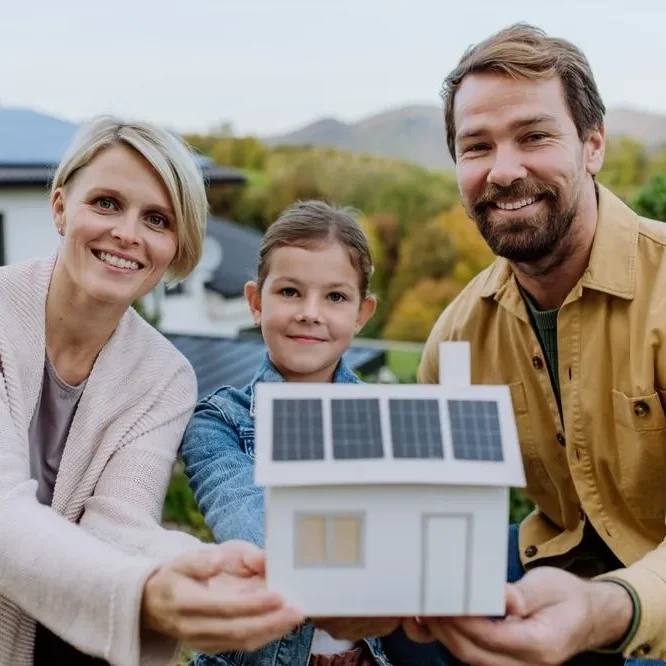How to Have a Net-Zero Home in Florida that Uses Solar Panels
Florida’s abundant sunshine and beautiful weather make it a prime location for harnessing solar energy to create a net-zero home. A net-zero home is one that generates as much energy as it consumes, resulting in a minimal carbon footprint and lower utility bills. In this comprehensive guide, we will explore the steps and strategies to transform your Florida home into a net-zero haven using solar panels.
Understanding Net-Zero Homes
Before we dive into the specifics of creating a net-zero home, it’s important to understand what it means and why it’s essential:
- Definition: A net-zero home is a highly energy-efficient dwelling that produces as much renewable energy as it consumes over the course of a year.
- Benefits: Net-zero homes offer significant advantages, including reduced energy bills, a smaller environmental footprint, and increased property value.
- Environmental Impact: Net-zero homes help combat climate change by reducing greenhouse gas emissions and dependence on fossil fuels.
1. Assess Your Home’s Energy Usage
The first step in achieving a net-zero home in Florida is to assess your current energy consumption. Understanding where and how your home uses energy is crucial to identify areas for improvement.
Consider hiring a professional energy auditor to conduct a thorough assessment, including:
- Insulation and Air Sealing: Evaluate the insulation in your walls, attic, and floors to reduce heat loss or gain. Seal any gaps or cracks that may allow air leaks.
- Energy-Efficient Appliances: Replace old, inefficient appliances with ENERGY STAR-rated models to reduce electricity consumption.
- Lighting: Switch to energy-efficient LED bulbs throughout your home to save on lighting costs.
- Windows and Doors: Ensure that your windows and doors are properly sealed and consider upgrading to energy-efficient ones.
2. Solar Potential in Florida
Florida’s sunny climate makes it an ideal location for solar power. Understanding the solar potential of your location is the next step in achieving a net-zero home:
- Solar Insolation: Florida enjoys abundant sunlight, with an average of over 5 hours of peak sun per day, making it one of the best states for solar energy production.
- Roof Orientation: Ensure your roof is positioned to maximize sun exposure. South-facing roofs are ideal for solar panel installations, followed by east and west-facing orientations.
- Shading: Minimize shading from nearby trees or structures to optimize the efficiency of your solar panels.
3. Solar Panel Installation
The heart of your net-zero home transformation lies in the installation of solar panels. Follow these steps for a successful installation:
- Selecting a Solar Provider: Research and choose a reputable solar installation company in Florida with experience in net-zero projects.
- Solar Panel Type: Decide between monocrystalline, polycrystalline, or thin-film solar panels based on your budget and efficiency requirements.
- Inverter Selection: Opt for a high-quality inverter system to convert DC solar energy into usable AC power efficiently.
- Roof Mounting: Ensure proper roof mounting of solar panels with an angle that optimizes sun exposure.
- Permitting and Inspections: Complete the necessary permits and inspections to comply with local regulations.
4. Solar Battery Storage
To achieve true net-zero living, consider installing solar battery storage systems that store excess energy generated during the day for use during the night or on cloudy days:
- Battery Selection: Choose a reliable battery storage system such as Tesla Powerwall or LG Chem RESU.
- Integration: Integrate the battery storage system with your solar panels and home energy management system.
- Energy Management: Use smart technology to monitor and manage your energy consumption effectively.
5. Energy-Efficient Appliances and Lighting
Transitioning to energy-efficient appliances and lighting can further reduce your overall energy consumption and complement your solar power system:
- LED Lighting: Replace traditional incandescent bulbs with energy-efficient LED lighting throughout your home.
- Energy Star Appliances: Upgrade your appliances to those with the Energy Star label, signifying high efficiency.
- Smart Thermostats: Install a smart thermostat to optimize your HVAC system’s performance and energy use.
6. Water and Pool Heating with Solar
In Florida’s sunny climate, harnessing solar power for water and pool heating can significantly reduce energy consumption:
- Solar Water Heater: Install a solar water heater on your roof to heat your water using the sun’s energy.
- Solar Pool Heater: Invest in a solar pool heating system to extend your swimming season without increasing electricity bills.
7. Net Metering and Selling Excess Energy
Leverage Florida’s net metering policies to maximize the benefits of your solar installation:
- Net Metering Agreement: Work with your utility company to set up a net metering agreement, allowing you to sell excess energy back to the grid.
- Energy Credits: Earn energy credits when your solar system produces more energy than your home consumes, reducing future energy bills.
8. Regular Maintenance and Monitoring
To ensure the long-term performance of your solar system, implement regular maintenance and monitoring procedures:
- Cleaning Panels: Periodically clean your solar panels to remove dust, dirt, and debris that can hinder their efficiency.
- System Checks: Schedule regular system checks with your solar provider to detect and address any issues promptly.
- Monitor Energy Usage: Continuously monitor your energy usage and production to optimize your system’s efficiency.

Lorem ipsum dolor sit amet, consectetur adipiscing elit. Ut elit tellus, luctus nec ullamcorper mattis, pulvinar dapibus leo.
